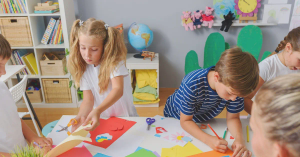There has always been a debate about whether a positive learning environment makes a sizeable difference in the mindset and learning curve of the child. The environment that challenges the young mind and creates a challenge often makes the educational outcomes improve rather drastically. There seems to be a directly proportional correlation between a positive ambiance to a positive academic, social, and emotional growth mindset.
Mindset and the learning environment
The positive learning environment sends a signal of identity safety to the child. They make the child secure that they are valued and can grow to be successful. If there are no negative associations regarding diverse ethnic and socioeconomic groups, children focus on the positive identity safety and blossom at an optimal rate.
Poor academic outcomes are often associated with childhood adversity. The economic or emotional dysfunction in a family can be a big reason why children feel ostracized and neglected. This may be a precursor of low self-esteem and confidence that translates into a poor mindset, and growth prospects are low. It has been studied that positive classroom environments often serve as cognitive stimulants and improve children’s positive learning-oriented mindsets.
How does the environment influence learning?
The environment influences learning in a big way. When a child spends a large part of her life in a classroom, it is bound to influence her learning mindset. If the environment you study in inspires trust and a sense of belonging children are encouraged to challenge their horizons. Positive feedback also helps in helping students form winning strategies.
The effect of classroom environment on student learning
If the classroom is set up with desks in rows, then the child’s creativity is stifled. Such a situation is generally perceived as one where the teacher is the centre and there is no participation from the class, or at best, very small inputs. The traditional method can be renovated by using semi-circular desks with three to four children sitting together. This arrangement markedly increases the participation level, and children are found actively asking questions.
A teacher’s way of handling the class, interacting with students and the way she organizes the lesson makes a huge difference in the way the child learns. The motivated and passionate teacher is empowering and motivates her students to give their best. An emotionally positive classroom environment produces a better academic and life skill learning curve. The teacher’s role is the most important one in building an atmosphere of a positive learning mindset.
Superior engagement between teachers and students and amongst the students themselves makes the class more comfortable for everyone. Small things like art and charts on the wall, live projects, group activities, and experiential learning opportunities build a positive classroom environment. Simple things like brighter paint, ventilation, better desk arrangement, and audiovisual learning methods can often make the classroom a more interesting place. It is no secret that learning and retention become more viable when interest is ignited.






